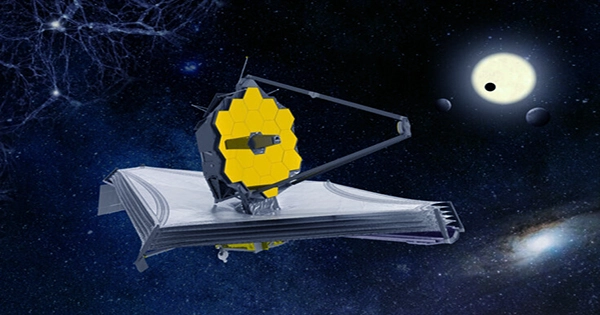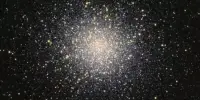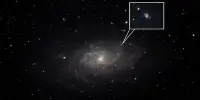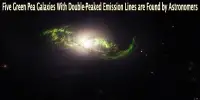The JWST is the world’s biggest and most powerful telescope. The JWST, which will be launched into space on Christmas Day 2021 from Europe’s Spaceport in French Guiana for a cost of around $10 billion, will be able to look back in time further than any other telescope, capturing the formation of stars and planets, as well as the birth of the first galaxies in the early universe. JWST sits on the shoulders of its predecessor, the Hubble Space Telescope, and while the two are expected to collaborate for some time, the key distinction is that Hubble utilizes optical and ultraviolet wavelengths, whereas JWST uses optical and ultraviolet wavelengths. Much of the data collected by the JWST will be infrared.
The JWST can see through gas and dust and see dim and faraway objects more clearly than ever before because to the utilization of infrared light. This massive multinational partnership involving NASA, the European Space Agency, and the Canadian Space Agency has been in the works for more than two decades. After commencing development in 1996, the original 2007 launch date was repeatedly postponed for the following 14 years, causing some to question the journey would ever take place. However, there was a compelling reason to postpone. Repairs would be difficult due to the nature of the JWST orbit, so they had to make sure it was flawless.
In just 29 days, JWST traveled 1.5 million kilometers (1 million miles) to its final destination. This extremely expensive piece of equipment is now positioned immediately behind Earth, in the gravitationally stable Lagrange 2 or L2 region. The JWST’s L2 placement, which allows it to travel at a roughly constant distance from Earth while staying out of both the Moon and Earth’s shadows, allows it to operate in a halo orbit.
The JWST will be held in place by the Sun’s orbit, unlike Hubble, which circles Earth at a distance of around 550 kilometers (340 miles). The JWST L2 location also consumes less fuel, resulting in a mission lifespan of five to ten years. It has a few improvements over Hubble, including the ability to shoot selfies! The primary mirror of the JWST is three times the size of the Hubble telescope’s mirror, with a diameter of 6.5 meters and a surface area of 25 square meters. The five-layer sunshield, which is the size of a tennis court, is also impressive.
The sunshield has a Sun Protection Factor (SPF) of a million and is critical to the JWST’s operation, as the telescope must remain cool in order for the infrared capability to work properly. Early in 2022, the first JWST picture was released. It depicts the telescope’s first photons of light caught when it oriented its 18 mirrors to a nearby star.
However, it must cool down to achieve its optimal working temperature of roughly 40 K (less than -380°F), which will take slightly under 100 days after launch. The telescope is presently “cooling out,” as NASA puts it, prepared to begin gathering photographs of a cosmos that has yet to be explored. Summer 2022 will be a highly exciting period for the astronomy community, since the first “real” photographs from the JWST are expected to be released approximately six months after launch.
















